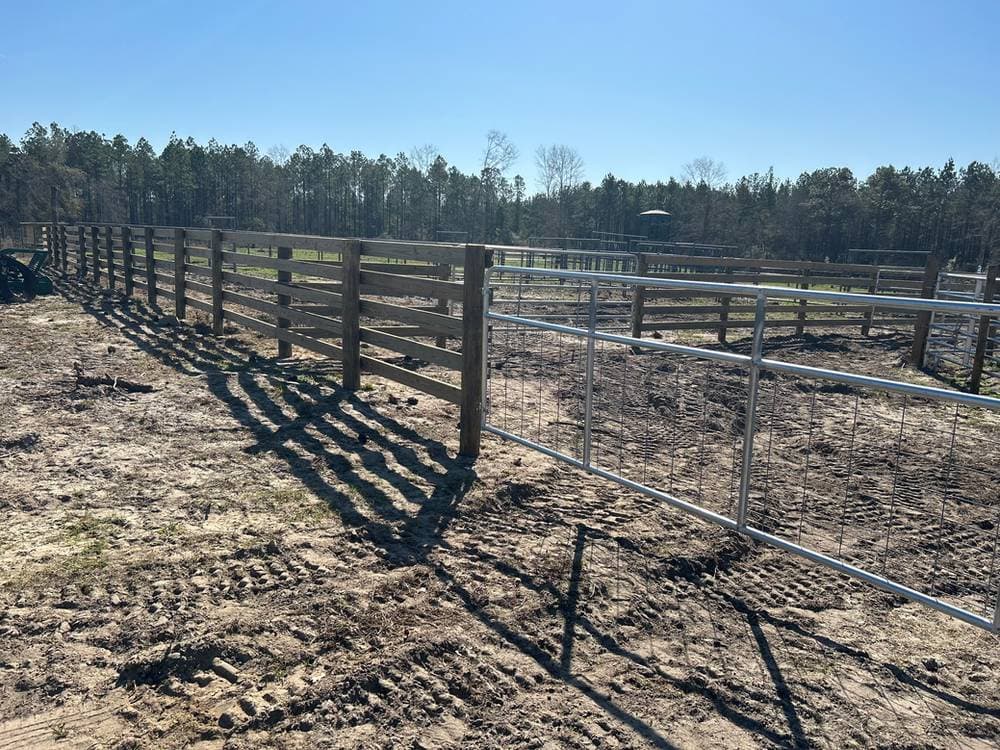
7 Essential Farm Fencing Lessons for Success with NRCS EQIP
Why EQIP Fencing Matters in Florida
The Natural Resources Conservation Service’s Environmental Quality Incentives Program helps Florida producers build fences that improve grazing management, protect water, and support wildlife while cutting out-of-pocket costs. With a clear plan and the right materials, your NRCS EQIP fence can boost productivity, reduce maintenance, and strengthen environmental stewardship.
Lesson 1: Choose the Right Fence Type
Begin with your goal and species.
- Cattle: High tensile smooth wire or barbed wire for long, efficient perimeters.
- Sheep and goats: Fixed knot or woven wire with openings sized to prevent heads and kids from slipping through.
Lesson 2: Plan the Layout Carefully
Need Help?
Get expert fencing advice and free quotes. Our team is ready to help with your project.
Available Mon-Fri, 8am-6pm EST
Map boundaries, water, lanes, gates, and sensitive areas before you set a single post. Align lines with contours, avoid wet bottoms when feasible, and place gates where equipment turns cleanly. Good layout supports rotational grazing, shortens daily moves, and lowers mud and rutting near entrances.
Lesson 3: Know Your Permits and Approvals
Florida requirements vary by county. Confirm property lines, call 811 for locates, and check whether wetlands, streams, or wildlife corridors trigger extra review. EQIP conservation plans must show how your fence protects resources, maintains hydrology, and meets program standards. A contractor experienced with NRCS projects will help you assemble the right documents.
Lesson 4: Buy Materials Built for Florida
Humidity and salt air are hard on steel and wood. Choose Class 3 galvanized wire, pressure treated ground-contact posts, corrosion resistant fasteners, and gates suited to livestock pressure. Specify mesh size, wire gauge, and brace hardware in writing so field crews install exactly what the plan requires.
Lesson 5: Build for Longevity, Not Just Day One
Strength starts underground.
- Corners and ends: Machine driven posts, true H-brace geometry, correct spans, and solid diagonals.
- Tension: Pull wire to spec, tie off cleanly, and use proper crimps or knots for the product.
Lesson 6: Maintain for Peak Performance
Light, regular attention prevents expensive rebuilds. Walk the line seasonally and after storms. Clear vegetation from hot wires, tighten a span before it sags, replace broken clips or staples, and re-plumb any post that starts to lean. Keep simple records so future repairs go faster.
Lesson 7: Consider a Professional NRCS Contractor
An EQIP-savvy builder can design to spec, source compliant materials, and document every step. Ask for licenses, insurance, recent references, and a scope that specifies post depth, wire type and gauge, brace details, hardware, energizer sizing, and a milestone payment schedule.
Quick Recap
- Match fence type to species and purpose.
- Plan gates, lanes, and contours before you build.
- Verify county rules, utilities, and EQIP conservation needs.
- Use Florida-ready materials that resist corrosion and rot.
- Build strong corners and braces, then tension correctly.
- Maintain lightly and often to extend service life.
- Hire an NRCS-experienced contractor when scope is large or complex.
Ready to move from plan to pasture? Combine an EQIP conservation plan with durable materials and professional installation to create a fence that protects resources, simplifies daily work, and lasts for years.
Share this article
Related Posts
Need Help?
Get expert fencing advice and free quotes. Our team is ready to help with your project.
Available Mon-Fri, 8am-6pm EST
Related Posts
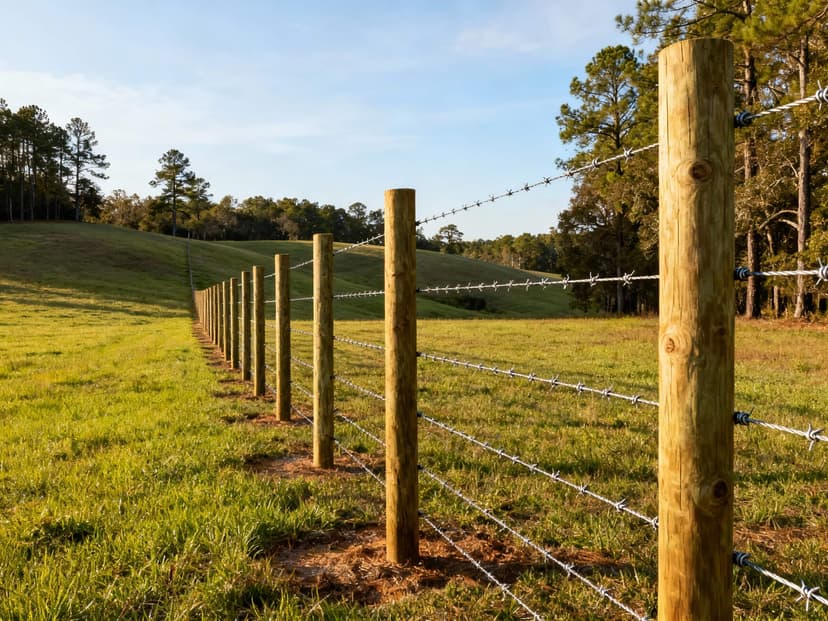
Game Fence Guide: Choosing the Best for CWD & Asset Protection
Why a High-Security Game Fence is a Critical Investment For landowners with large properties, a high-security game fence...
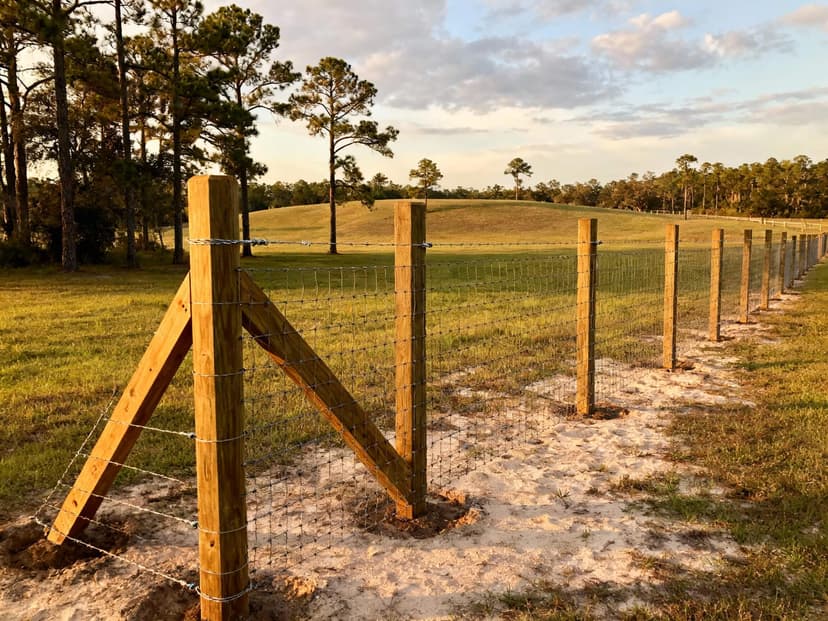
5 Goat Fence Ideas to Keep Your Herd Safe in the Southeast
Top Goat Fence Ideas for Southeastern Farms Your goats are clever, curious, and natural escape artists. Here in the Sout...
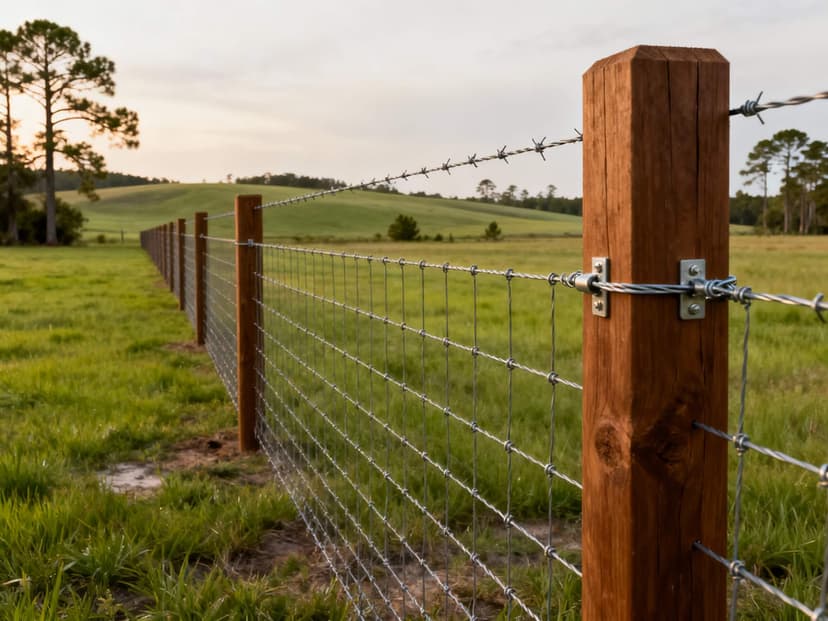
A Farmer's Guide to Stock Fence Wire in the Southeast
Why a Quality Wire Coating is Non-Negotiable in the Southeast Living and working in the Southeast means dealing with a u...
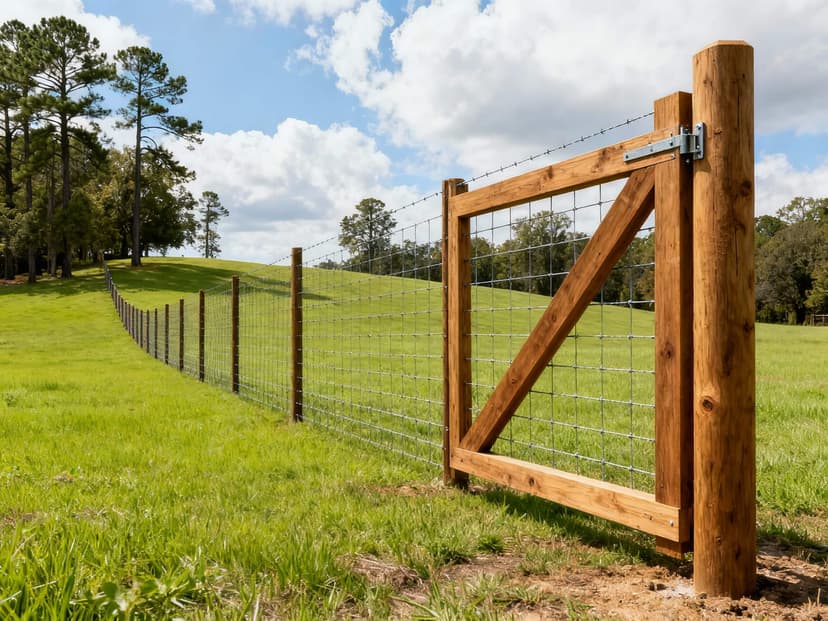
Stock Fencing Guide: Choosing the Best for Southeast Farms
A Complete Guide to Stock Fencing for a Southeastern Farm Choosing the right stock fence is one of the most critical dec...
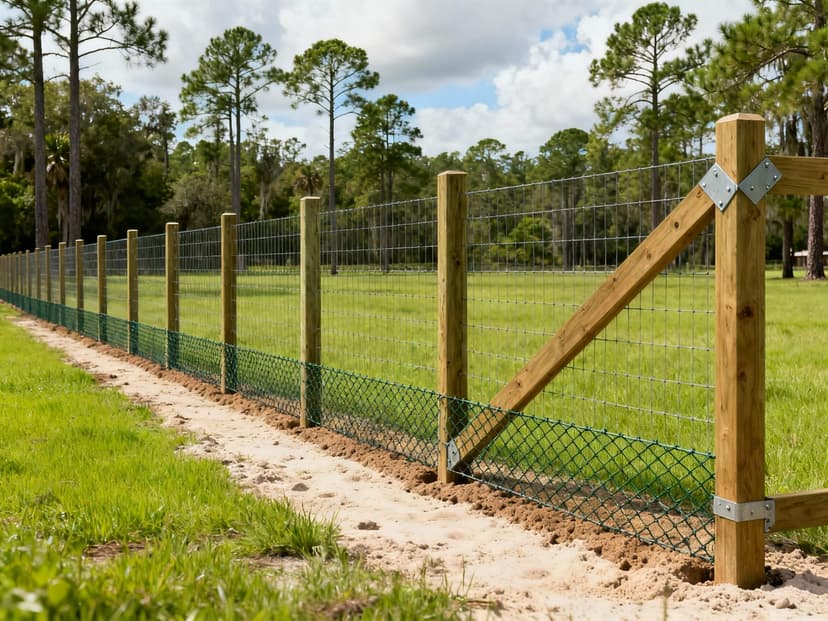
Escape Proof Goat Fencing: A Complete Guide
Why Goats Are Master Escape Artists If you've ever owned goats, you know they are clever, persistent, and surprisingly a...






